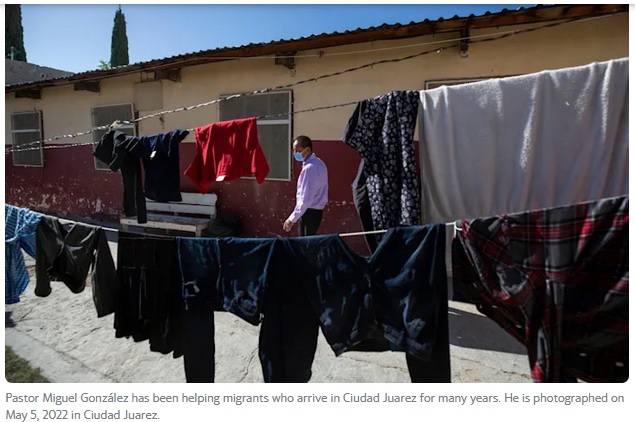CIUDAD JUÁREZ, CHIHUAHUA (May 17, 2022). — Episcopal Pastor Miguel González walked down a darkened dormitory hall into a bright orange kitchen.
“Good morning everyone,” he said, introducing himself to the newcomers seated around plastic tables at the Pasos de Fe shelter on a recent Thursday morning. “Some of you arrived yesterday?”
Heads nodded.
“Well, welcome,” he said. “From where are you visiting us?”
“Honduras,” said two women. A soft-spoken man said, “Haiti.”
Thousands of people are arriving in Juárez and other Mexican border cities in anticipation of the end of an emergency public health order at the border. Many have been waiting months or years in Mexico to seek asylum in the U.S., a legal right that was all but suspended by the Title 42 order.
Nothing is assured: The Biden administration’s decision to lift Title 42 on May 23 — and end the quick expulsion of migrants at the border — is being challenged in U.S. federal court by political rivals. In Ciudad Juárez, migrant aid workers are concerned about how U.S. authorities will respond to the growing number of asylum seekers, with the future of Title 42 under litigation and uncertain.
Juárez finds itself once again becoming the crowded waiting room at the door to the United States.
“We are contending with two flows: those coming from the south and those being returned by the United States,” said González, who runs Pasos de Fe and also serves as president of a network of 17 shelters in the city. “We are organized as a shelter network but our capacity is overwhelmed.”

The Juárez network of shelters boasts some 3,000 beds, some housed in a converted municipal gymnasium, others in a retrofitted factory, in church dormitories and other places. They were 100% occupied in early May.
So were the 50 spots at Pasos de Fe, a modest shelter adjacent to a chapel in a neighborhood of rutted, unpaved roads named after islands. Its rooms were crammed with blue bunk beds welded together by an earlier community of Cuban asylum seekers; now they were taken by Haitian and Honduran families and adults.
Click here to read the complete original article on YN






